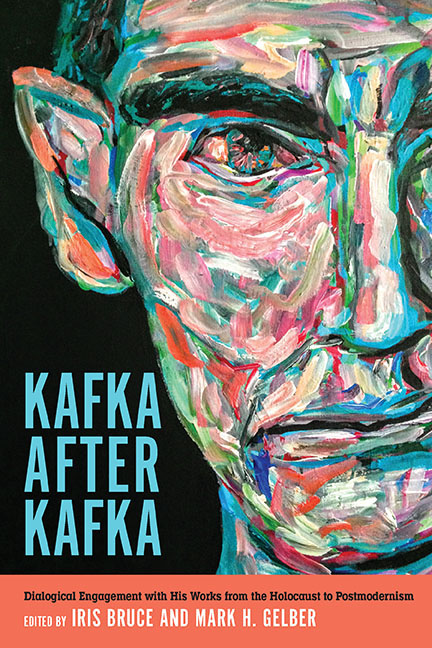Book contents
- Frontmatter
- Contents
- Acknowledgments
- Introduction
- Part I Philosophical and Literary Hermeneutics after the Holocaust
- Part II Kafka in Israeli Cultural Space
- Part III Kafka from Modernism to Postmodernism
- 8 The Beetle and the Butterfly: Nabokov's Lecture on Kafka's The Metamorphosis
- 9 “When the Still Image Projected on the Screen Bursts into Movement”: Cinematic Space-Time in Kafka's “A Country Doctor”
- 10 After the Animal: Kafka, Monstrosity, and the Graphic Novel
- 11 Kafkas after Kafka: Anglophone Poetry and the Image of Kafka
- Notes on the Contributors
- Index
9 - “When the Still Image Projected on the Screen Bursts into Movement”: Cinematic Space-Time in Kafka's “A Country Doctor”
from Part III - Kafka from Modernism to Postmodernism
Published online by Cambridge University Press: 12 April 2019
- Frontmatter
- Contents
- Acknowledgments
- Introduction
- Part I Philosophical and Literary Hermeneutics after the Holocaust
- Part II Kafka in Israeli Cultural Space
- Part III Kafka from Modernism to Postmodernism
- 8 The Beetle and the Butterfly: Nabokov's Lecture on Kafka's The Metamorphosis
- 9 “When the Still Image Projected on the Screen Bursts into Movement”: Cinematic Space-Time in Kafka's “A Country Doctor”
- 10 After the Animal: Kafka, Monstrosity, and the Graphic Novel
- 11 Kafkas after Kafka: Anglophone Poetry and the Image of Kafka
- Notes on the Contributors
- Index
Summary
IN HIS 1951 ESSAY, “KAFKA AND HIS PRECURSORS,” Jorge Luis Borges recalls texts of various literatures and ages in which he recognizes the “voice” of Franz Kafka. The first example Borges recalls refers to Zeno's paradoxes against motion:
A moving object at A (declares Aristotle) cannot reach point B, because it must first cover half of distance between the two points, and before that, half of the half, and before that, half of the half of the half, and so on to infinity; the form of this illustrious problem is, exactly, that of The Castle, and the moving object and the arrow and Achilles are the first Kafkian characters in literature. (199)
Indeed, paralysis in space and time is one of the hallmarks of Kafka's work. While Borges presents The Castle as an incarnation of the Zenonian world, other manifestations of Zeno's paradoxes in Kafka's work come to mind, be it the unimaginable journey to the next village in “The Next Village,” the unending voyage of the imperial messenger in “An Imperial Message,” or the ever-stretching stairs in “Advocates,” which “under your climbing feet … will go on growing upwards.”
Five years before Borges's essay on Kafka, film theorist Jean Epstein, in his 1946 book The Intelligence of a Machine), turns to Zeno's paradoxes in his discussion of the cinematic representation of motion in space and time: “The cinematograph seems to be a mysterious mechanism intended to assess the false accuracy of Zeno's famous argument about the arrow, intended for the analysis of the subtle metamorphosis of stasis into mobility, of emptiness into solid, of continuous into discontinuous, a transformation as stupefying as the generation of life from inanimate elements.” The emergence of the moving image—and thus of cinematic space-time—is bound up with the “metamorphosis of stasis into mobility” since, in the words of pioneering filmmaker and theorist Sergei Eisenstein, “The concept of the moving (time-consuming) image arises from the superimposition—or counterpoint—of two differing immobile images.” It is the rapid succession of a series of still images separated by short intervals of space and time that “produces the appearance of uninterrupted movement.”
- Type
- Chapter
- Information
- Kafka after KafkaDialogic Engagement with his Works from the Holocaust to Postmodernism, pp. 155 - 170Publisher: Boydell & BrewerPrint publication year: 2019



